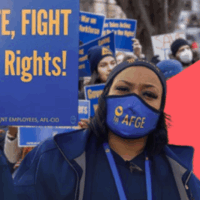A decades-old investigative technique the federal government uses to expose evidence of discriminatory home-selling practices nationwide is also an effective tool to uncover patterns of hiring discrimination.
The US Justice and Housing and Urban Development departments both use matched-pair testing—also called auditing—to clamp down on real estate agents who violate fair-housing standards by denying equal opportunities to home buyers based on their race, religion, and other protected characteristics.
Agencies charged with curtailing workplace discrimination could yield similar successes in detecting bias issues at the early stage of the hiring process if they adopt this “underutilized” testing method, according to a new report from the New School’s Institute on Race, Power and Political Economy and the National Employment Law Project that was provided to Bloomberg Law.
Under matched-pair testing, two or more individuals with similar qualifications—but of different races, gender identities, or other protected classes—would pose as applicants for the same job at the same company to test whether they would be treated differently based on their race.
The test’s findings, which may include who gets to the next stage in the hiring process and how differently the testers were treated, would be analyzed to assess whether illegal bias occurred.
Using this tool to target employers and staffing agencies would potentially change their behavior, relieve current workers from having to identify and report discriminatory issues they’ve experienced, and ensure proactive enforcement of antidiscrimination laws, the report said.
Proactive Tool
Hiring discrimination is particularly difficult to detect because those not hired often don’t know why or who was selected instead, said Rebecca Dixon, executive director of NELP and co-author of the report. As a result, employers are unlikely to be held accountable, she told Bloomberg Law.
“The audit testing is a way to proactively look for discrimination and change behavior,” Dixon said. “By increasing the chances that you will get caught for discrimination, you will work harder as an employer to make sure you’re doing it the right way. So it really can shift behavior throughout the labor market.”
“For a problem that is grounded structurally over time in such a persistent and pernicious way, leaving the onus of detection to individuals is not a good approach,” said Darrick Hamilton, a professor of economics and urban policy at the New School and co-author of the report. “Discrimination has been a feature in our economy.”
Matched-pair testing may be more effective than relying on litigation, said Nicole Grunfeld, a partner at Katz Melinger PLLC.
Most employers may not overtly express discrimination during the application process, so job applicants are often unaware when they aren’t hired because of bias, she said. That makes it difficult for plaintiffs to prove bias in failure-to-hire cases unless the employer’s action was “really blatant,” Grunfeld said.
Matched-pairing might be more effective for large employers because they are more likely than smaller companies to show patterns of biased hiring practices, she added.
Tony Torain II, a shareholder at Polsinelli PC who represents businesses, acknowledged matched-pair testing’s effectiveness in eliminating hiring discrimination.
Companies should begin “auditing their own hiring processes before it becomes an issue with the EEOC,” or an applicant says they were turned down for employment because of a certain protected characteristic, he said.



